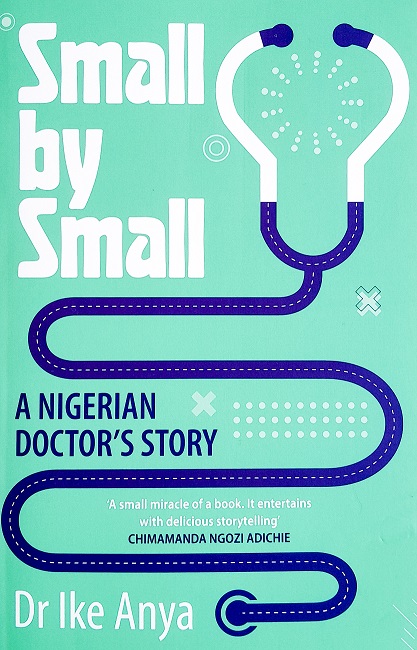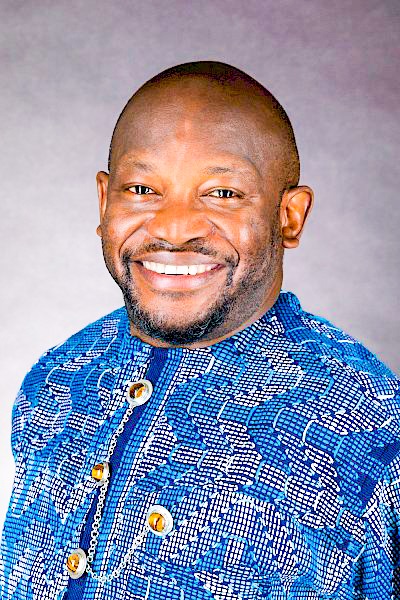‘OGA, kedu ebe nwanyi a si?’ (Sir, where did this woman come from?), a group of the 1994 Class of medical students in its second year of study at the Enugu Campus of the University of Nigeria enquired in the Igbo language, of an attendant upon their first encounter with one of cadavers (dead human bodies used by medical students to study anatomy) laid out on metal trolleys inside the harshly lit and pungent chemical reeking cadaver room of the institution’s Anatomy Department – in an echo of many family members and friends not dead but ‘lost’ in the Biafran War, which came back to remind a particular one of!
Among a group of ten white coats-donning students huddled around the unidentified female corpse was Ike Anya, the academically top achieving son of a professor father lecturing at the very University of Nigeria Nsukka where the younger man had commenced his medical studies in 1989 at, before progressing onto Enugu for sophomore studies.
Now, having placed bets on who among them would either faint, retch or flee the room – someone among this bunch diffused the daunting moment of reckoning with a dose of humour by suggesting that, ‘let’s call her Queeneth’, in reference to remains which would be at their disposal for the next eighteen months as practical part of anatomy studies, pending which period they would had dissected ‘her’ to the extent of untraceability!
‘Queeneth’ was one of unclaimed mortal remains preserved in formaldehyde tanks, whose mere presence gave rise to the superstition of the laboratory being haunted by spirits such as hers.
Seeking to debunk a prevailing myth, an attendant once intimated to Anya regarding a ‘very troublesome group one time’ which caused him to have ‘a really difficult class once.’ Shiver me timbers, he was alluding to the cadavers of a notorious gang of robbers who once terrorized Enugu whilst emboldened by powerful medicine which made their bodies bulletproof – rendering it impossible for police to apprehend them!
‘Every night we will be hearing swimming noise inside the tank. The noise continued inside the lab, every day, every night, until they finished dissecting their bodies and then peace came back,’ narrated the attendant.
Anya had seized the opportunity to enquire from the attendant (whose task of working with dead bodies lend credence to a myth that his kind coped with the assistance of enabling potions of sorts) as to ‘where do the cadavers come from?’ His response to the doctor-in-training is something which can only be described as a glimpse into the sphere of the morbid: ‘Many of them are criminals, maybe they execute them after court sentence them to death, or police kill them in shoot out.’
The man went on to add that others were shunned by family even in death because of shame attached to their criminal ways – with their corpses ending up unclaimed in hospital mortuaries and donated to the varsity’s Anatomy Department. Others like ‘Queeneth’ are mysteries who may have been victims of accidents which occurred far away for their next-of-kin to trace.
Unlike the fellow pre-clinical basic sciences of physiology and biochemistry, anatomy is regarded as real medicine entailing, for instance, students wielding scalpel blades having to slice through cadavers’ tough and leathery grey-black skin, cutting deftly through bright yellow subcutaneous fat emerging in globules, bright like Bird’s Eye custard (as Anya described the sight thereof) – as part of practicals.
Then, at the end of the eighteen-month period lies 2nd MB exams (a gruelling ritual scheduled in the middle of a six-year journey to becoming a doctor) necessary to pass in order to be allowed to continue with the final three years of clinical study before the awarding of a medical degree. In 2nd MB, half of the class of 300 will pass, with half of those who fail having to join a class below, enduring a repeat year of arduous study before a final second attempt at 2nd MB, with a second failure implying leaving medical school to start afresh, studying for a completely new degree – with three preceding years of medicine wasted and the dream of becoming a doctor dead!
It was with an appreciation of the task laid afore Anya that his maternal grandmother Mma Abiriba intoned with a relish of humorous phrase infused into the language of the Igbo speaking ethnic people of the ancient kingdom of Abiriba located in Abia State, Nigeria:
‘Okwa unu ndee osu bekee da si “smallu by smallu”’ (the English translation of which implies: everything worthwhile is achieved small by small) –– in response to her medical doctor-in-training maternal grandson informing her during a visit to his family home, that there were still many more years of studying and exams lying ahead before she could witness ‘the day that they give you the big gown of a doctor.’
The young Anya was still in the time between the end of the pre-clinical year at the University of Nigeria in the university town of Nsukka and commencement of further studies at the Enugu Campus, on the arduous route towards becoming a medical doctor, and social upheaval, which would shut varsity for three months, was already brewing owing to a World Bank-endorsed Structural Adjustment Programme propelled by the government – thus alleged citizens – which resulted in the spiralling of food prices and translating to students on campus divided among those who subsisted on the 0-1-0 (where each zero stands for a skipped meal) pattern of meals per day and 1-1-1, for the one appertaining to the privileged few!
Small by Small, described by acclaimed author Chimamanda Ngozi Adichie as ‘a small miracle of a book’ (and whose existence, in turn, is described as a miracle, by its author) is a collection of short stories appertaining to the Nigerian setting – in addition to being an important record of one of the most different periods in Nigerian history in the 1990s when Nigerian universities were at the heart of social and political activism and medical students were at the forefront of the country’s struggles.
Among a plethora of fond reminiscences Anya recounts are those ranging from when, whilst anxiously awaiting their 2nd MB results, himself and a classmate named China ventured to the off campus Madam Drive In, an eatery located in a small shed inside a vehicles compound operated by a buxom Igbo woman from which she served garri (granular flour made from cassava roots), egusi soup (commonly eaten soup across various ethnic groups of Nigeria) and her speciality of home-smoked fish, out of giant pots – to one time emerging with fellow students from a dissecting session in the lab only to discover that there was no water to wash their hands with shortly before lunchtime, with them ending up at a restaurant to demand water and soap with which they proceeded to vigorously scrub hands (repeatedly washing and rinsing) sticky from all the fibres and tissues they had earlier been cutting out!
Many such light-hearted anecdotes abound in the tome!
To put into perspective what Dr Anya has achieved, writing in Nigerian Health Watch, writer, Vivianne Ihekweazu notes that the tome’s release has sparked discussions around the world on the challenges (incessant strikes disruptive to schooling, on-and-off campus security issues and financial resources required to study medical students have to deal with – to the difficult working conditions the current generation of Nigerian medical professionals have to contend with) of a medical education and the attendant responsibilities. It is why, she observes, the emigration of medical doctors is a growing concern in Nigeria.
Dr Ike Anya is an author and experienced consultant in public health medicine working in Nigeria and the UK. He graduated from the College of Medicine at the University of Nigeria in 1995. A cofounder of Nigeria Health Watch, he has taught at The London School of Hygiene and Tropical Medicine – among other institutions.

He has contributed to the BBC World Service programmes and podcasts, Health Check and Unexpected Elements. He also holds an MA in Creative Non-Fiction from the University of East Anglia and is a co-founder of Abuja Literary Society, an advisory on new Nigerian writing.
He is a contributor to, Of This Our Country, an anthology of acclaimed Nigerian writers on their home, identity and culture.
A b-format, Small by Small is published by Canongate and distributed in South Africa by Jonathan Ball Publishers.
Available at leading bookstores countrywide, it retails for R330.


